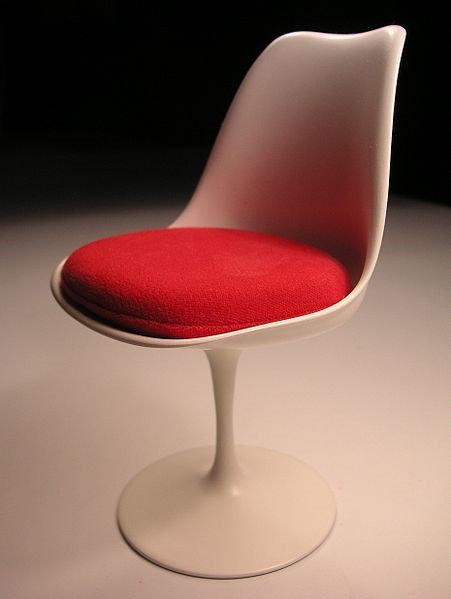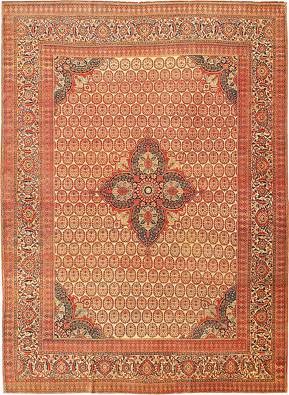Decorative Arts
The final kind of three-dimensional art we will examine is decorative art. Reflect on how decorative art is different from the other kinds of two- and three-dimensional art that we have learned about so far in this course
Craft
Craft requires the specific skilled use of tools in creating works or art. These tools can take many forms: words, construction tools, a camera, a paintbrush or even a voice. Traditional studio crafts include ceramics, metal and woodworking, weaving, and the glass arts. Crafts are distinguished by a high degree of workmanship and finish. Traditional crafts have their roots in utilitarian purposes: furniture, utensils and other everyday accoutrements that are designed for specific uses, and reflect the adage that "form follows function". But human creativity goes beyond simple function to include the aesthetic realm, entered through the doors of embellishment, decoration and an intuitive sense of design.
In the first example below, the smooth simple lines of a Tulip Chair, were designed by Eero Saarinen as an exercise in clarifying form. When it was made its futuristic use of curved lines and artificial materials were seen as emblematic of the "space age." In another example, a staircase crafted in the Shaker style takes on an elegant form that mirrors the organic spiral shape representing the 'golden ratio.'

Saarinen Tulpanstolen

Shaker style staircase, Pleasant Hill, Kentucky. National Parks Service
Utility is not the sole purpose of craft. The Persian carpet below has its use as a utilitarian object, but the craftsmanship shown in its pattern and design gives it a separate aesthetic value. The decorative element is visually stimulating, as if the artisan uses the carpet as simply a vehicle for his or her own creative imagination.

Antique Tabriz Persian carpet
As we've seen in an earlier module, quilts made in the rural community of Gee's Bend, Alabama, show a diverse range of individual patterns within a larger design structure of colorful stripes and blocks, and have a basis in graphic textile designs from Africa.
Even a small tobacco bag from the Native American Sioux becomes a work of art with its intricate beaded patterns and floral designs.

Sioux Tobacco Bag
The craftsmanship in glass making is one of the most demanding. Working with an extremely fragile medium presents unique challenges. Challenges aside, the delicate nature of glass gives it exceptional visual presence. A blown glass urn dated to first century Rome is an example. The fact that it has survived the ages intact is testament to its ultimate strength and beauty.

Cinerary Urn, Roman. C. 1st century CE, blown glass. National Archaeological Museum, Spain
Louis Comfort Tiffany introduced many styles of decorative glass between the late 19th and first part of the 20th centuries. His stained glass window The Holy City in Baltimore Maryland has intricate details in illustrations influenced by the Art Nouveau style popular at the turn of the 19th century.

The Holy City, Louis Comfort Tiffany, 1905, stained glass window, Brown Memorial Presbyterian Church, Baltimore, Maryland
The artist Dale Chihuly has redefined the traditional craft of glass making over the last forty years, moving it towards the mainstream of fine art with single objects and large scale installations involving hundreds of individual pieces.
Product Design
The dictum "form follows function" represents an organic approach to three-dimensional design. The products and devices we use everyday continue to serve the same functions but change in styles. This constant realignment in basic form reflects modern aesthetic considerations and, on a larger scale, become artifacts of the popular culture of a given time period.
The two examples below illustrate this idea. Like Tiffany glass, the chair designed by Henry van de Velde in 18eflects the Art Nouveau style in its wood construction with organic, stylized lines and curvilinear form. In comparison, the Ant Chair from 1952 retains the basic functional form with more modern design using a triangular leg configuration of tubular steel and a single piece of laminated wood veneer, the cut out shape suggesting the form of a black ant.

Chair, Henry van de Velde, 1895, wood, woven fiber.

Ant Chair, Arne Jacobsen, 1952, steel and wood
Source: Christopher Gildow, Washington State Board for Community and Technical Colleges, http://opencourselibrary.org/art-100-art-appreciation/ This work is licensed under a Creative Commons Attribution 3.0 License.
This work is licensed under a Creative Commons Attribution 3.0 License.